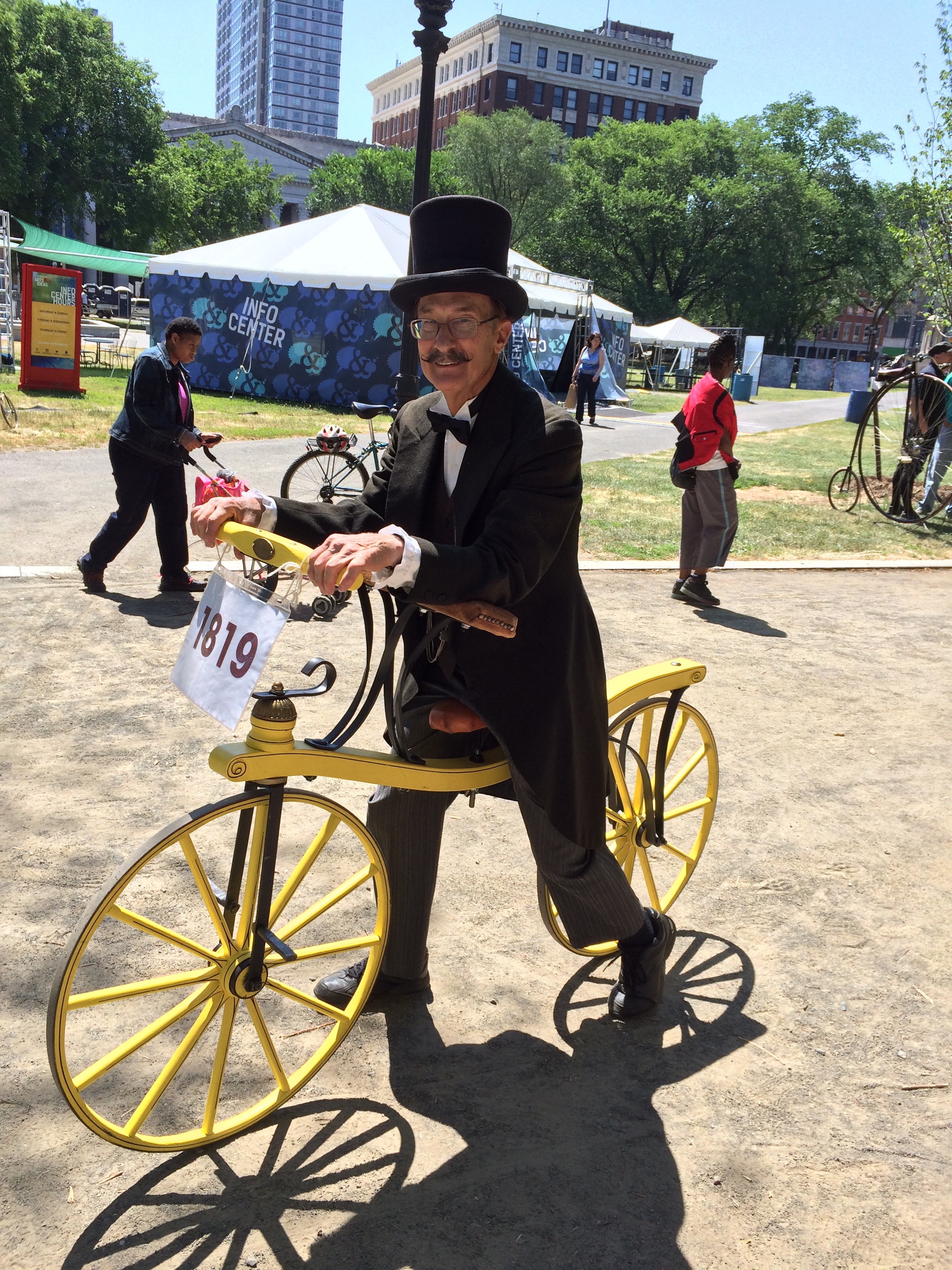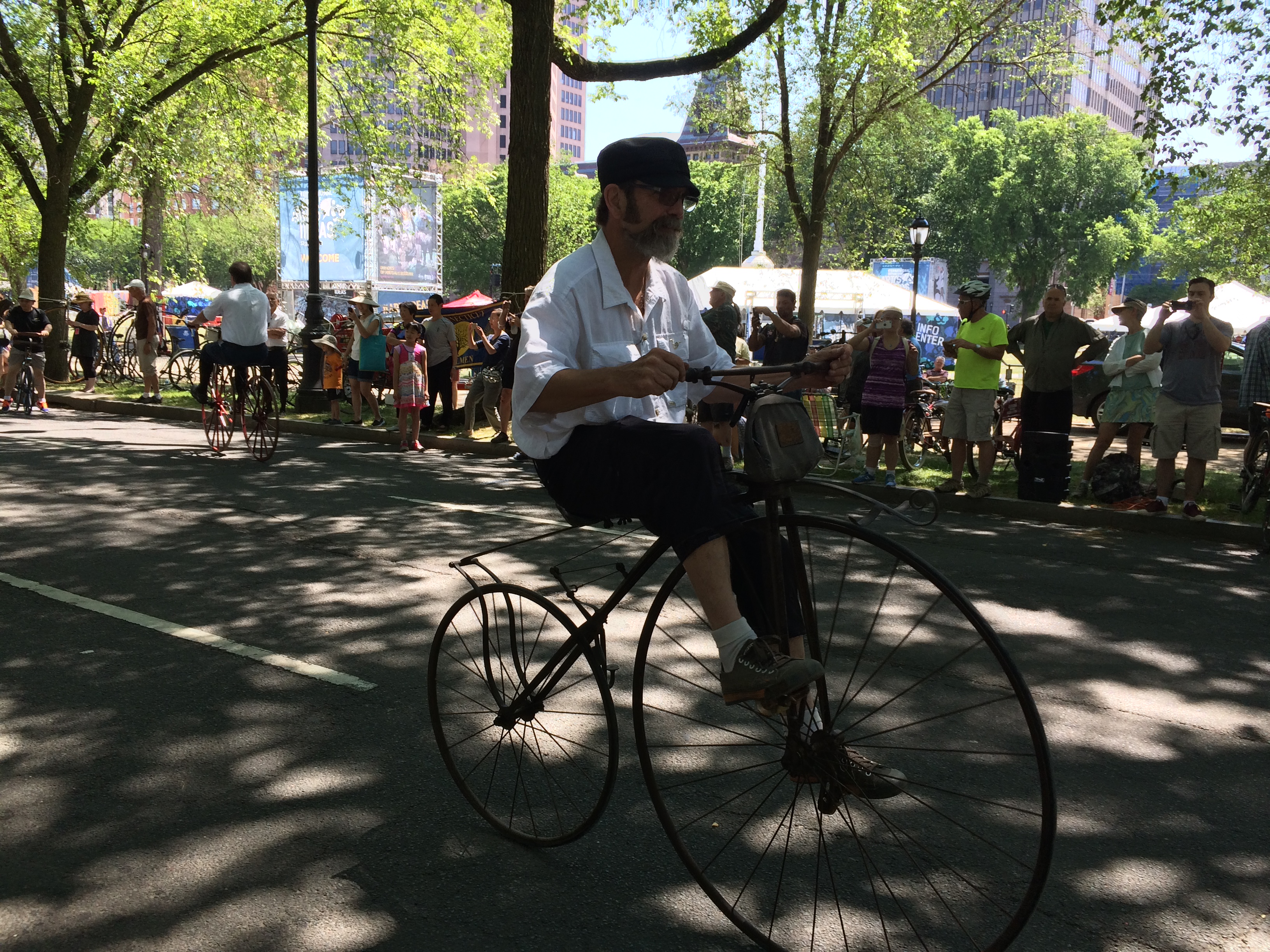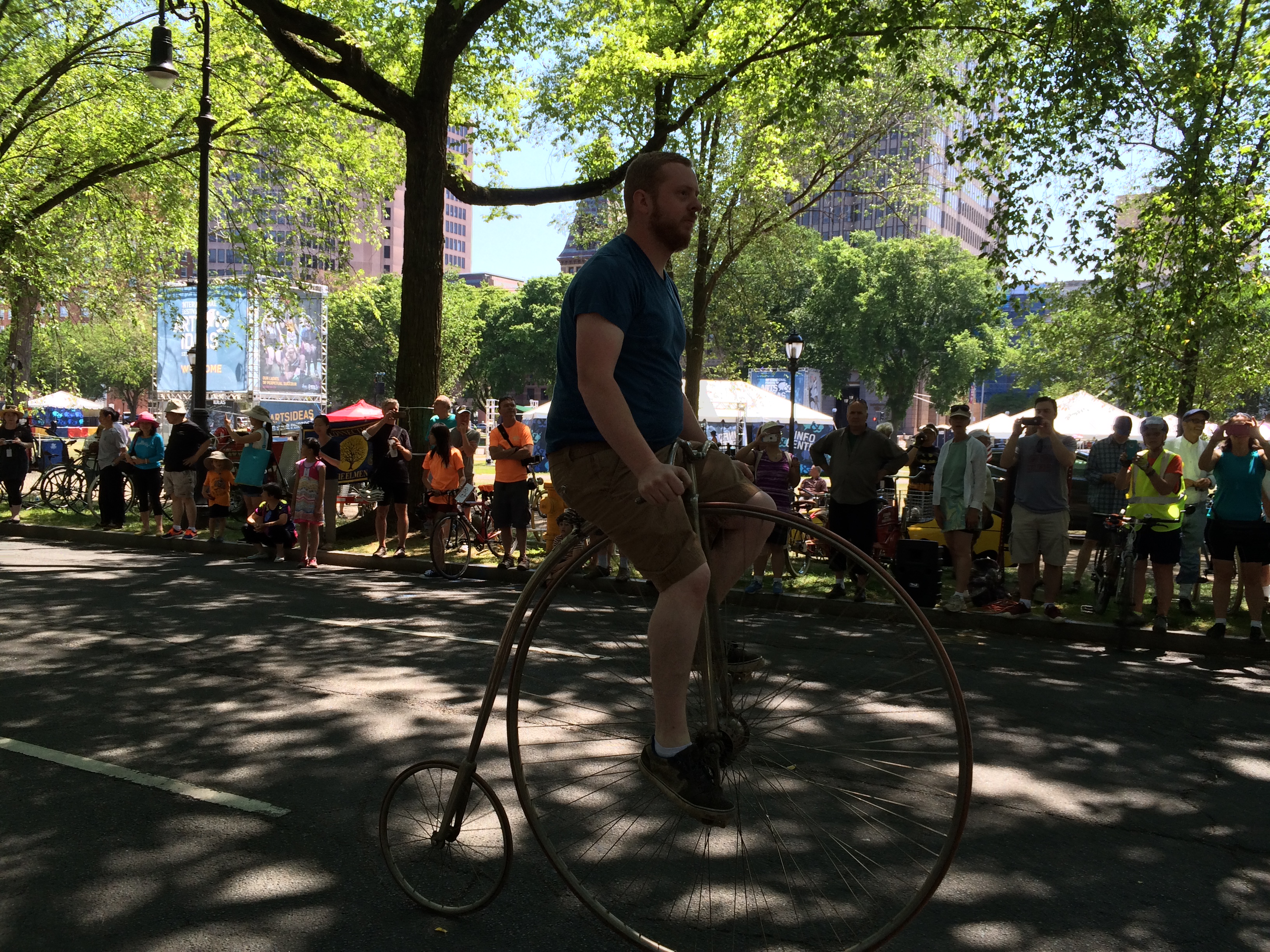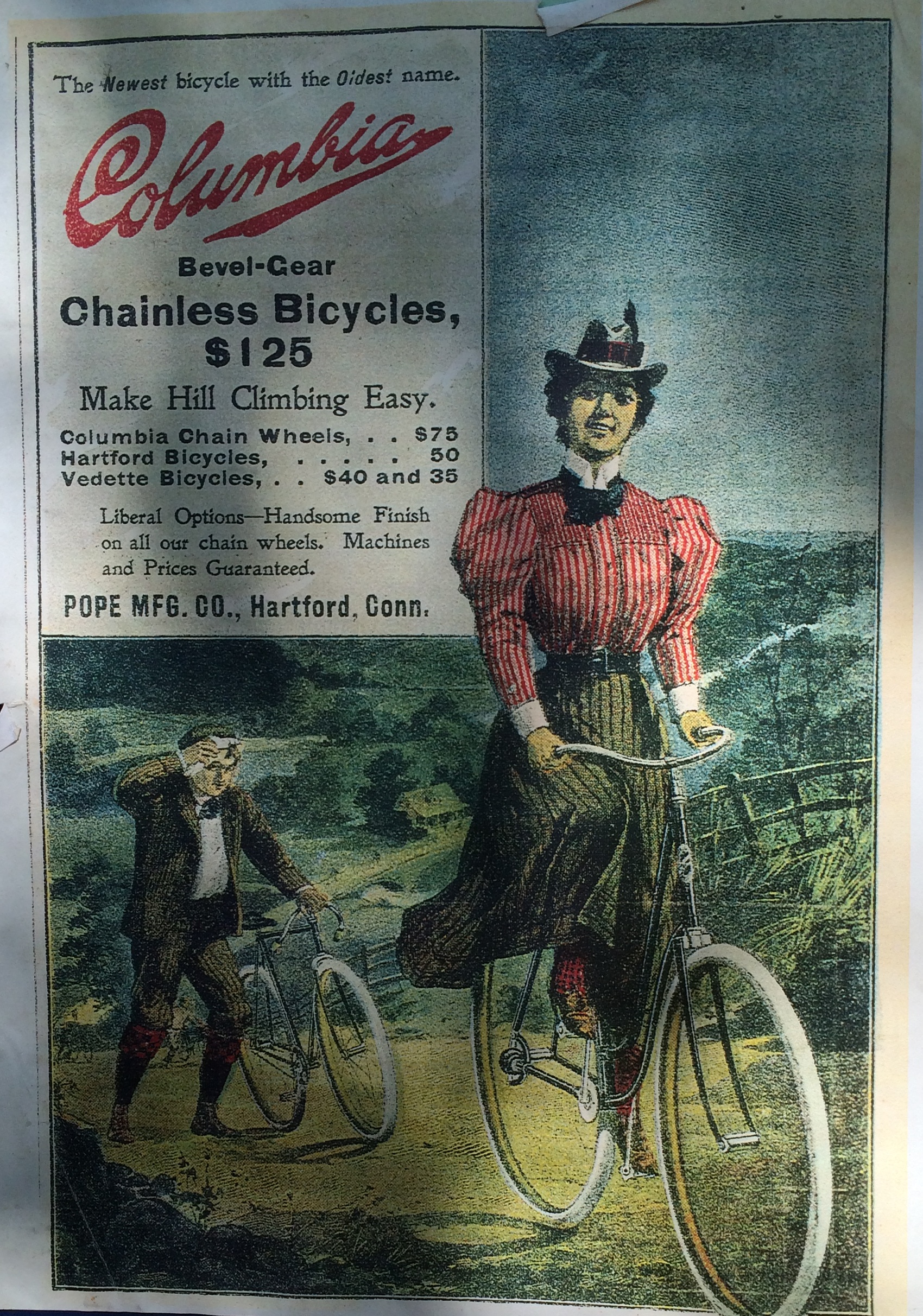New Trail in Cheshire, and Bicycle History in New Haven
On Saturday I rode south from Hartford to check out a newly-built segment of the East Coast Greenway in Cheshire, CT, and continued on to learn about bicycle history at the Arts and Ideas Festival in New Haven, CT.
The East Coast Greenway is a bike/walk route that stretches from Maine to Florida, and supporters are filling the gaps to convert more to off-road trail. The new segment will add 4 miles of trail through a beautiful wooded portion of Cheshire, CT, and connect to existing trail in the north (Southington) and south (Hamden and New Haven). While not yet finished nor officially open, the new trail is mostly paved and rideable, if you don’t mind a bit of gravel on the bridge aprons, and going around some fences (as hundreds of other riders have already done, judging from the tracks left behind).

I arrived in New Haven in time for a public demonstration by The Wheelmen, a group of antique bicycle collectors who gather to share their knowledge and show how people rode these two-wheeled inventions. (And yes, the group also included some Wheelwomen.) New Haven’s Arts and Ideas Festival coincided with the International Cycling History Conference and a celebration of the 150th anniversary of Pierre Lallement’s invention of the velocipede and his ride on the New Haven Green. While I had read some of this history, and seen a few old bikes on display in museums, this was a treat because never before had I seen so many people in one place, actually riding these bikes. They paraded their cycles in chronological order, and featured several items that were created in the Frog Hollow neighborhood of Hartford, the late 19th-century epicenter of bicycle manufacturing in the United States.





